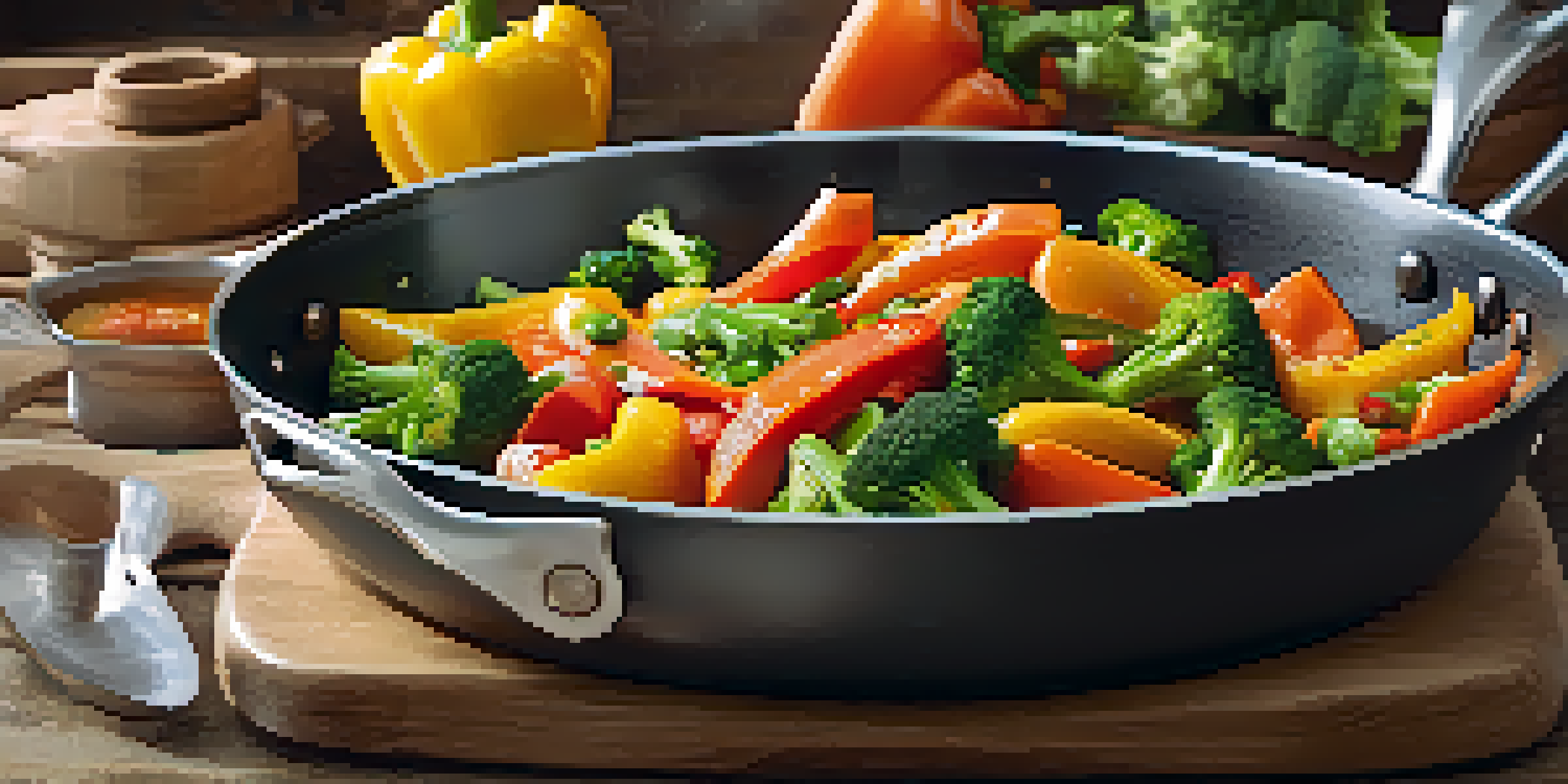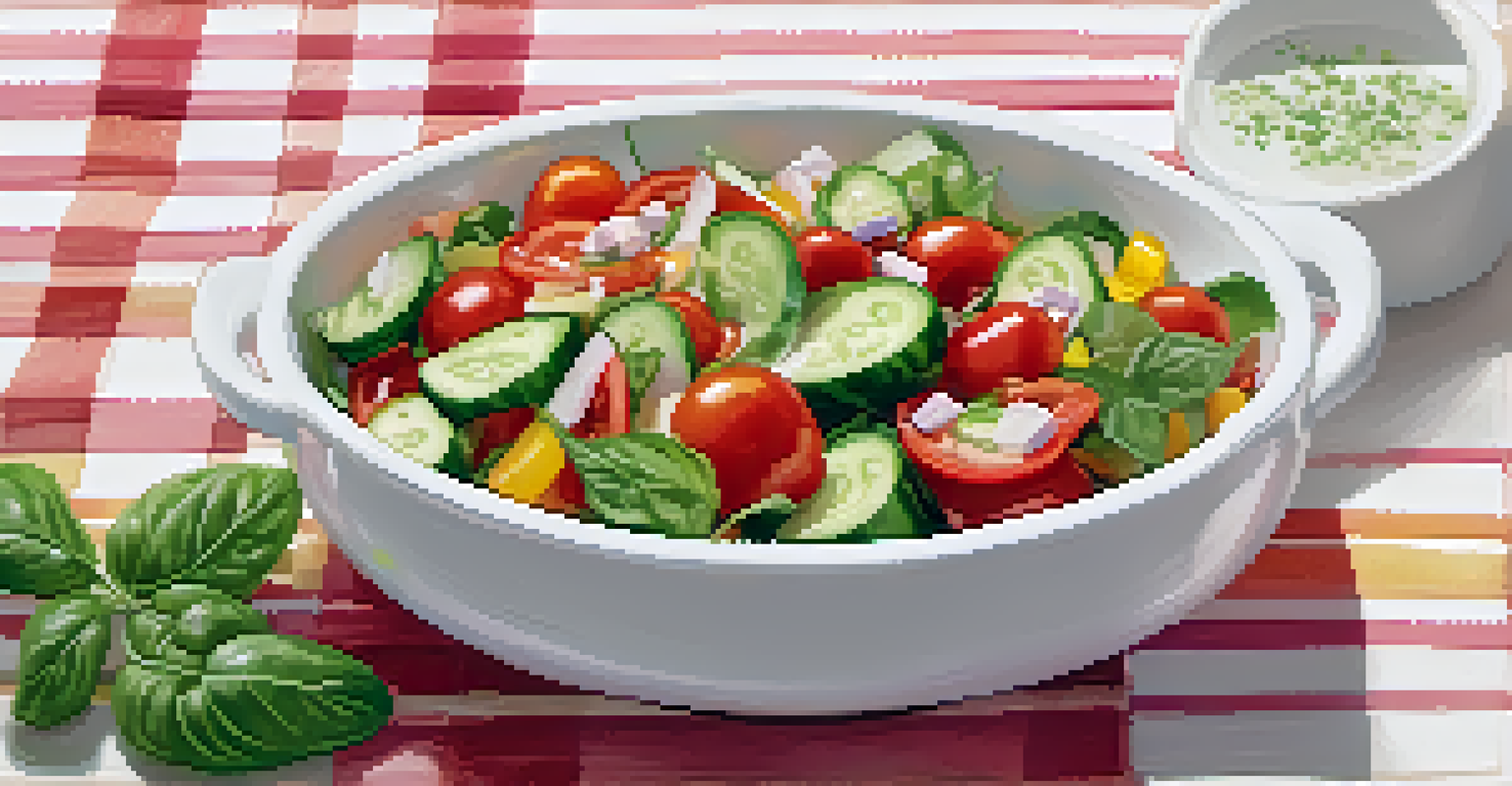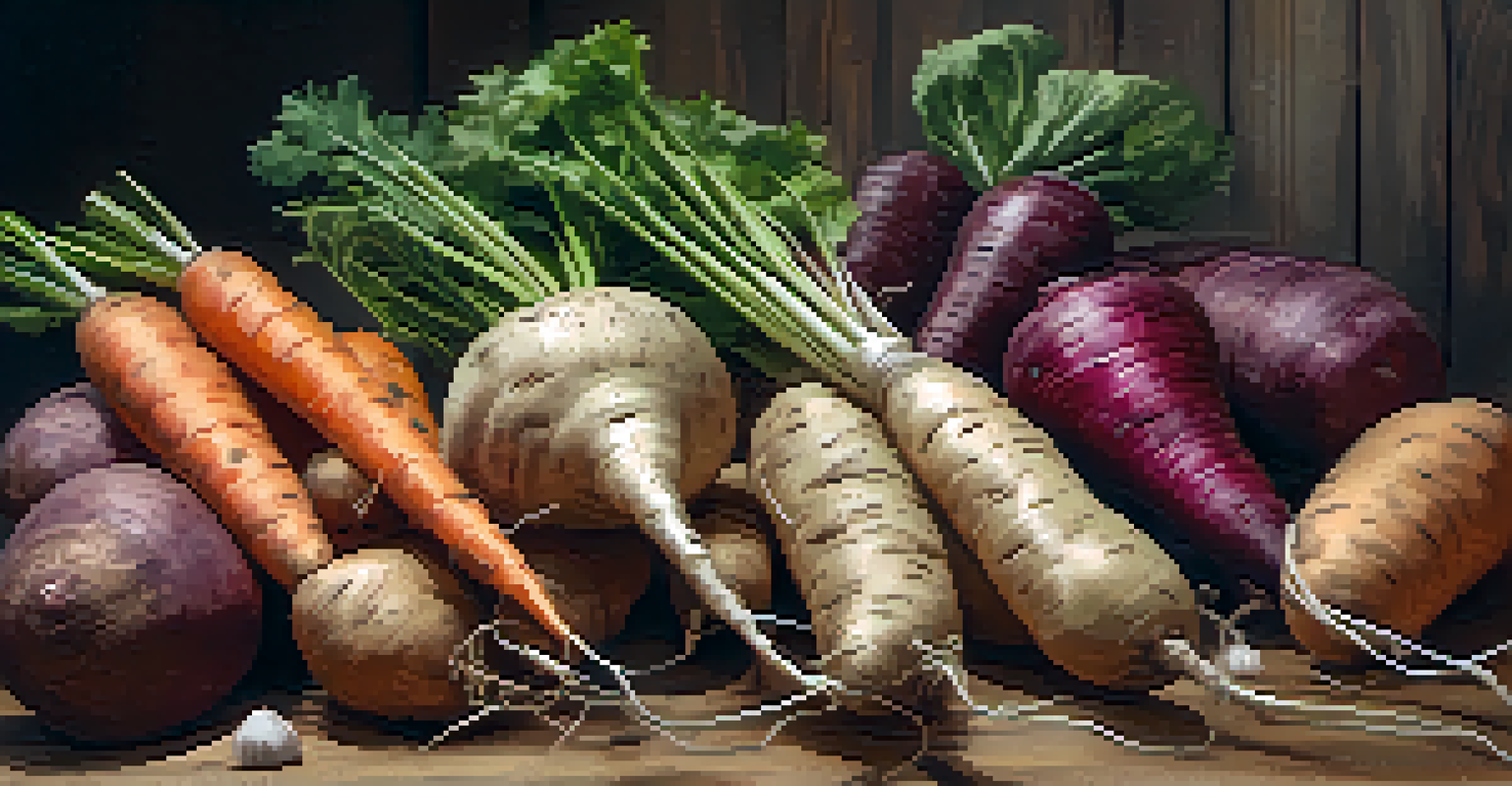A Beginner's Guide to Cooking with Fresh Vegetables

Why Fresh Vegetables Are Essential in Cooking
Fresh vegetables are not just colorful additions to your plate; they are packed with nutrients and flavor. Incorporating them into your meals can elevate your dishes and improve your health. Think of vegetables as the foundation of a balanced diet, providing essential vitamins, minerals, and fiber.
Let food be thy medicine and medicine be thy food.
Cooking with fresh veggies also offers a delightful sensory experience. The vibrant colors, crisp textures, and aromatic scents can transform your kitchen into a lively space. Plus, using seasonal vegetables means you're supporting local farmers and enjoying produce at its peak freshness.
When you choose fresh over processed, you're not only enhancing the taste of your meals but also making a positive impact on your overall well-being. It's a win-win situation where your taste buds and your body can rejoice together.
Choosing the Right Fresh Vegetables for Your Meals
Selecting fresh vegetables can feel overwhelming at first, but it can be simplified by focusing on a few key factors. Start by considering the season; some vegetables taste best when they're in season, like tomatoes in summer or squash in autumn. This seasonal approach ensures that you’re getting the freshest and most flavorful produce.

Next, look for vibrant colors and firm textures when shopping. These indicators often signal that the vegetables are fresh and full of nutrients. For instance, a bright green bell pepper usually tastes crisper and sweeter than a dull one.
Fresh Veggies Boost Health and Flavor
Incorporating fresh vegetables into your meals not only enhances taste but also provides essential nutrients for a balanced diet.
Lastly, don't hesitate to ask questions at your local market or grocery store. Farmers and vendors often have valuable insights about their produce, including the best ways to prepare them. This connection can help you build a more personalized and enjoyable cooking experience.
Basic Preparation Techniques for Fresh Vegetables
Preparation is key to making the most out of your fresh vegetables. Start by washing them thoroughly under running water to remove any dirt or pesticides. For leafy greens, consider soaking them in a bowl of water before rinsing to ensure all grit is washed away.
The secret of good cooking is, first, having a love of food. Second, a love of the kitchen.
Next, you’ll want to cut your vegetables in a way that enhances their flavor and texture. For example, slicing bell peppers into strips can create a satisfying crunch, while chopping broccoli into smaller florets can help them cook more evenly. Taking the time to prepare your veggies can make a noticeable difference in your dish.
Don’t forget to explore various cooking methods! Steaming, roasting, sautéing, or grilling can all bring out different flavors and textures. Try experimenting with different techniques to find what you and your family enjoy the most.
Flavors That Complement Fresh Vegetables
Knowing which flavors pair well with your vegetables can take your cooking to the next level. For example, leafy greens like kale and spinach often taste fantastic with zesty citrus or savory garlic. Imagine a bright lemon dressing drizzled over fresh spinach—it brings a whole new dimension to your dish.
Herbs and spices are also your best friends when cooking with fresh veggies. Fresh basil can elevate a simple tomato salad, while cumin can add a warm, earthy flavor to roasted carrots. Don’t shy away from experimenting with different combinations to discover your favorites.
Choosing and Preparing Fresh Produce
Selecting seasonal, vibrant vegetables and preparing them thoughtfully can significantly improve the quality of your dishes.
Additionally, consider incorporating healthy fats like olive oil or avocado to enhance flavor. These ingredients can help round out the taste and make your vegetables even more satisfying. A drizzle of olive oil can transform a simple roasted vegetable medley into a gourmet delight!
Simple Recipes to Start Cooking with Fresh Vegetables
As a beginner, starting with simple recipes can build your confidence in the kitchen. One easy option is a vegetable stir-fry, where you can toss your choice of chopped vegetables in a hot pan with a bit of oil and your favorite seasonings. This method quickly cooks the veggies while keeping them crisp and vibrant.
Another straightforward recipe is a fresh vegetable salad. Combine a variety of chopped vegetables—like cucumbers, bell peppers, and cherry tomatoes—with a simple vinaigrette for a refreshing side dish. This allows you to showcase the natural flavors of your veggies without too much fuss.
Lastly, consider roasting your vegetables for a sweet and caramelized flavor. Toss chopped veggies with olive oil, salt, and pepper, then roast them in the oven until tender. This method works beautifully with root vegetables like carrots and sweet potatoes, making them a delicious side or base for a hearty meal.
Storing Fresh Vegetables for Maximum Freshness
Proper storage is essential to keep your fresh vegetables tasting great for longer. Many veggies, such as leafy greens, thrive in the fridge. Store them in a breathable bag to maintain moisture without allowing them to wilt.
Root vegetables like carrots and potatoes do best in a cool, dark place. A pantry or cellar can help preserve their texture and flavor. Just be sure to keep them away from direct sunlight, which can speed up spoilage.
Storing and Cooking Tips for Fresh Veggies
Proper storage and cooking techniques, like roasting or stir-frying, help maximize the freshness and flavor of your vegetables.
Also, try to use your fresh vegetables within a week of purchase for optimal flavor and nutrition. If you find yourself with excess produce, consider freezing them. Many vegetables freeze well after blanching, allowing you to enjoy them long after the season has passed.
Common Mistakes to Avoid When Cooking with Fresh Vegetables
Even the most seasoned cooks make mistakes, so don’t feel discouraged! One common error is overcooking vegetables, which can lead to a mushy texture and loss of nutrients. Aim for that perfect balance where your veggies are tender yet still crisp.
Another mistake is neglecting seasoning. Fresh vegetables can be bland on their own, so don’t forget to season them generously with salt, pepper, and herbs. This can elevate even the simplest of dishes and make each bite enjoyable.

Lastly, avoid washing your vegetables too far in advance. Washing them before storage can lead to quicker spoilage. Instead, wash them just before you're ready to cook to keep them fresh and full of flavor.